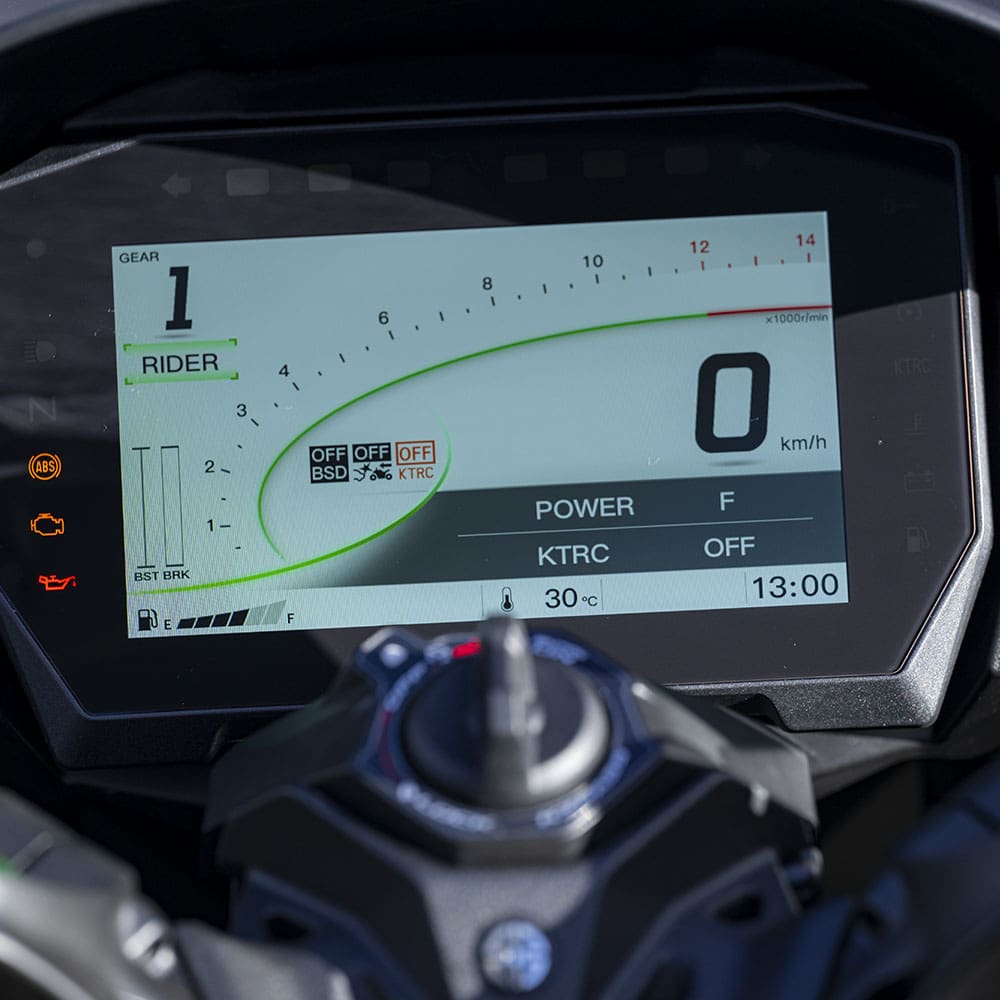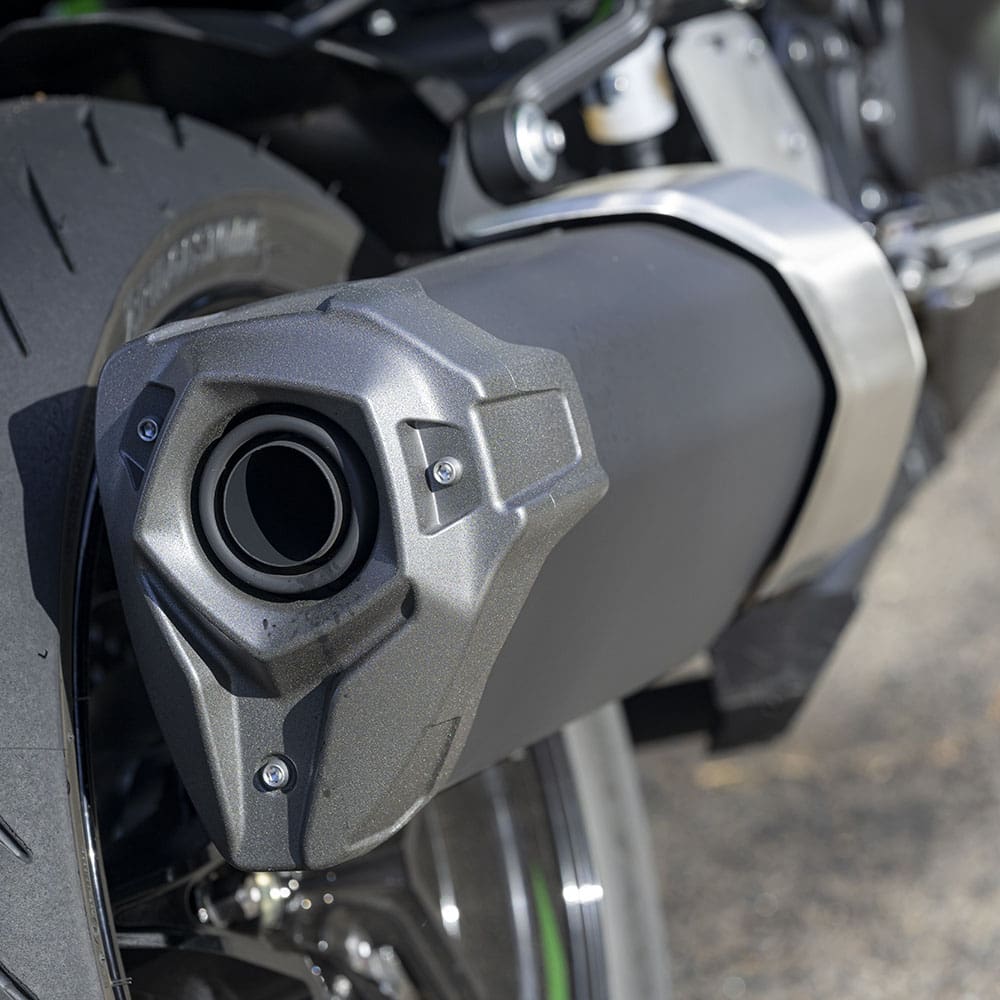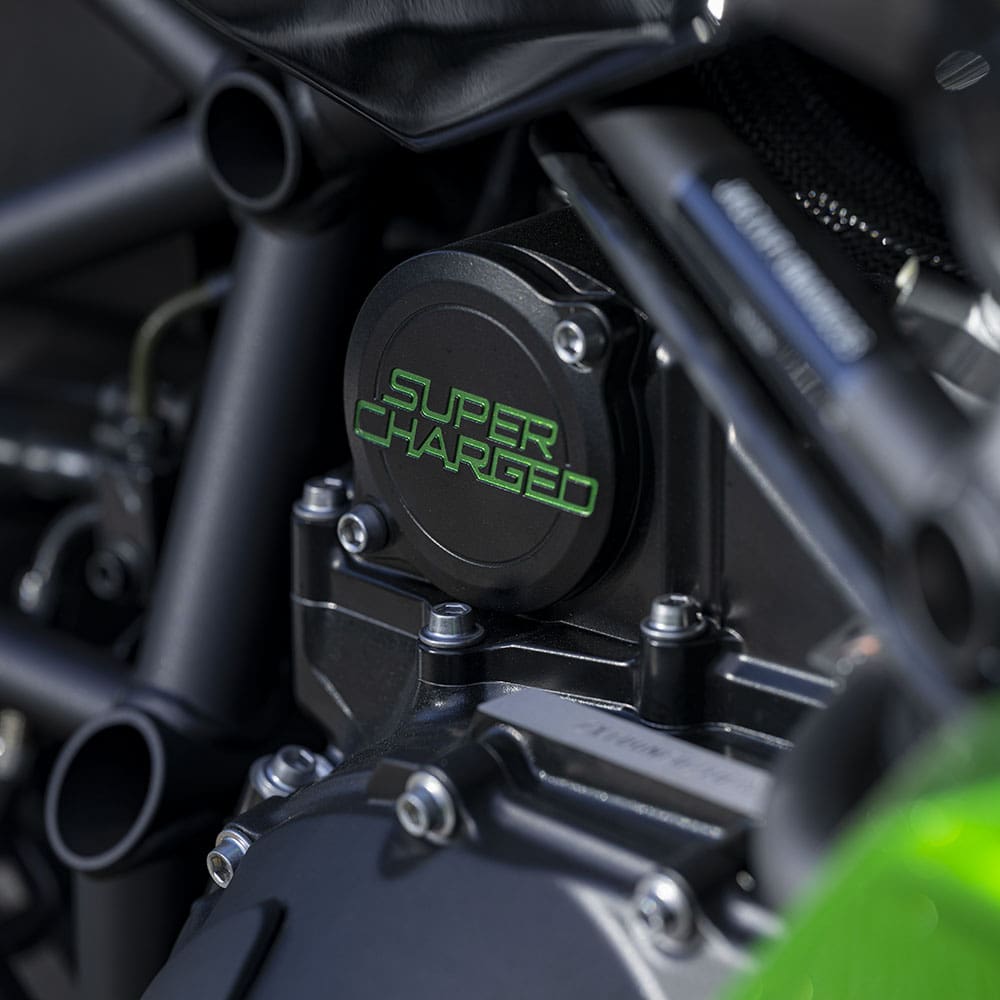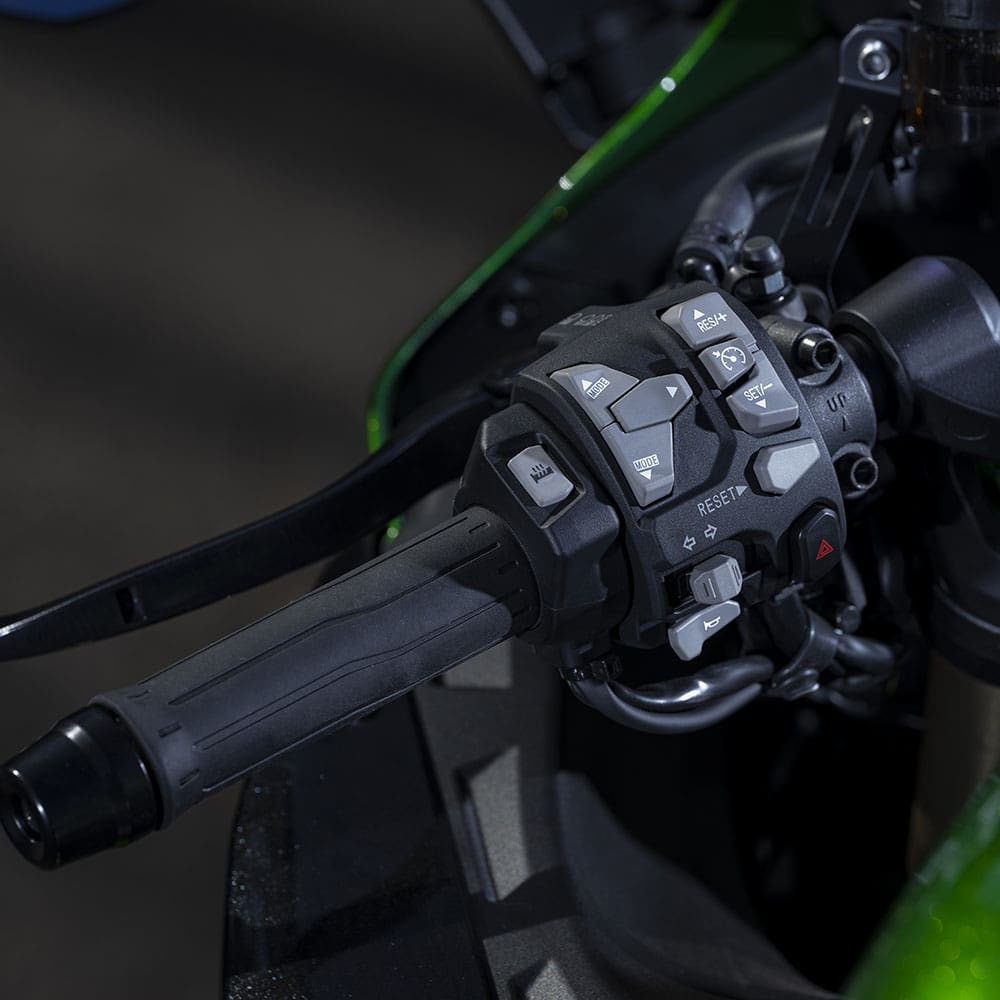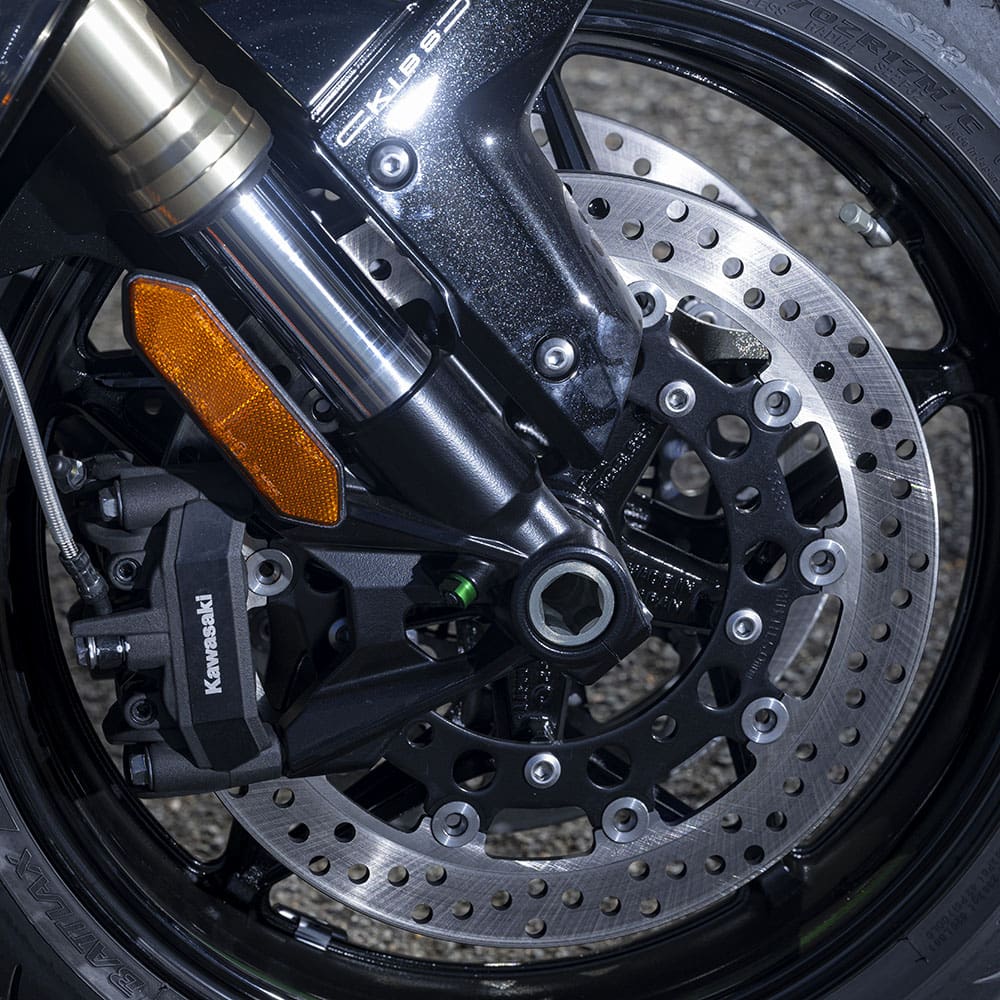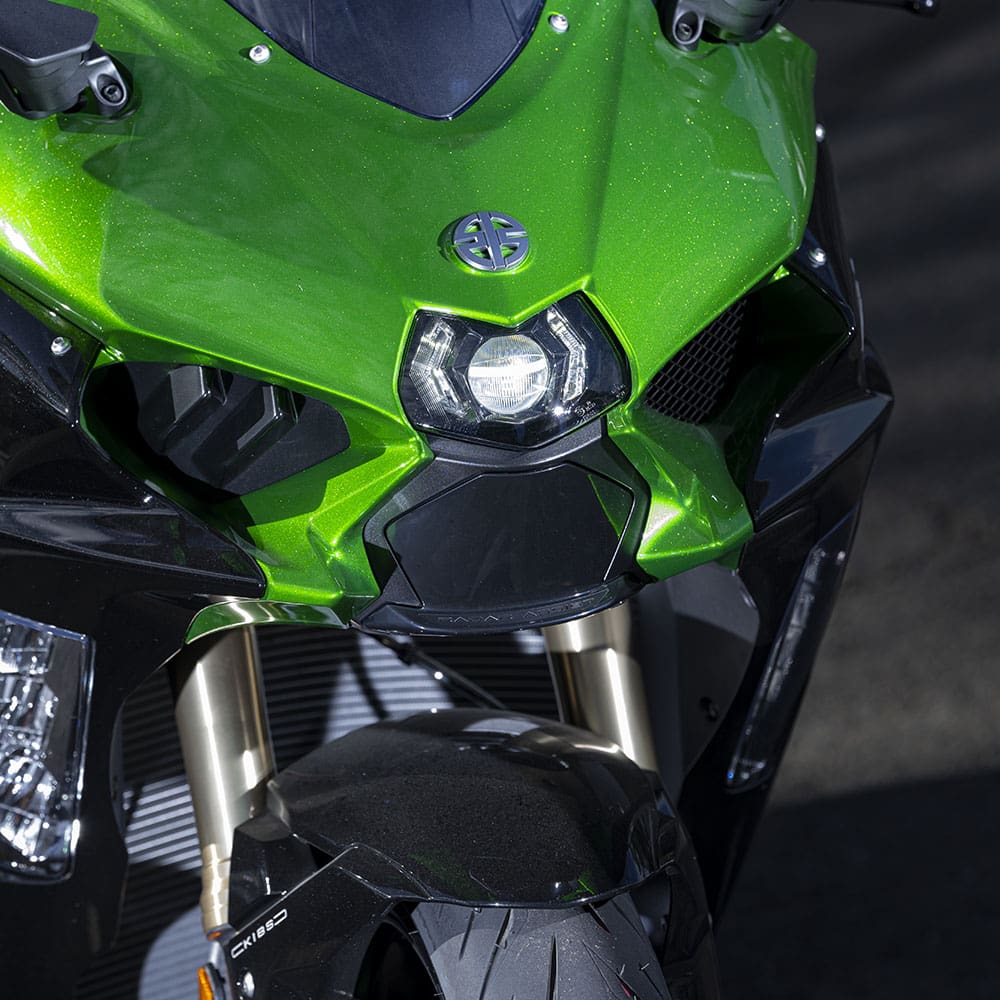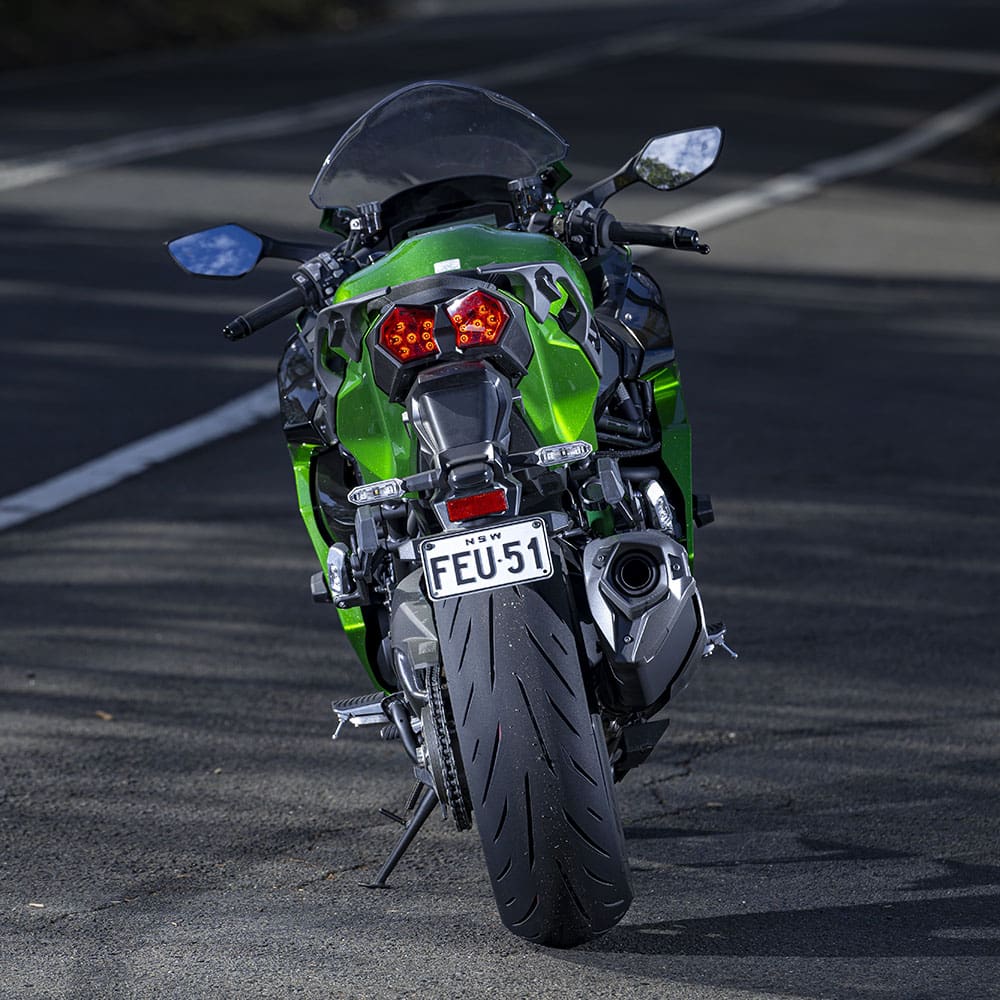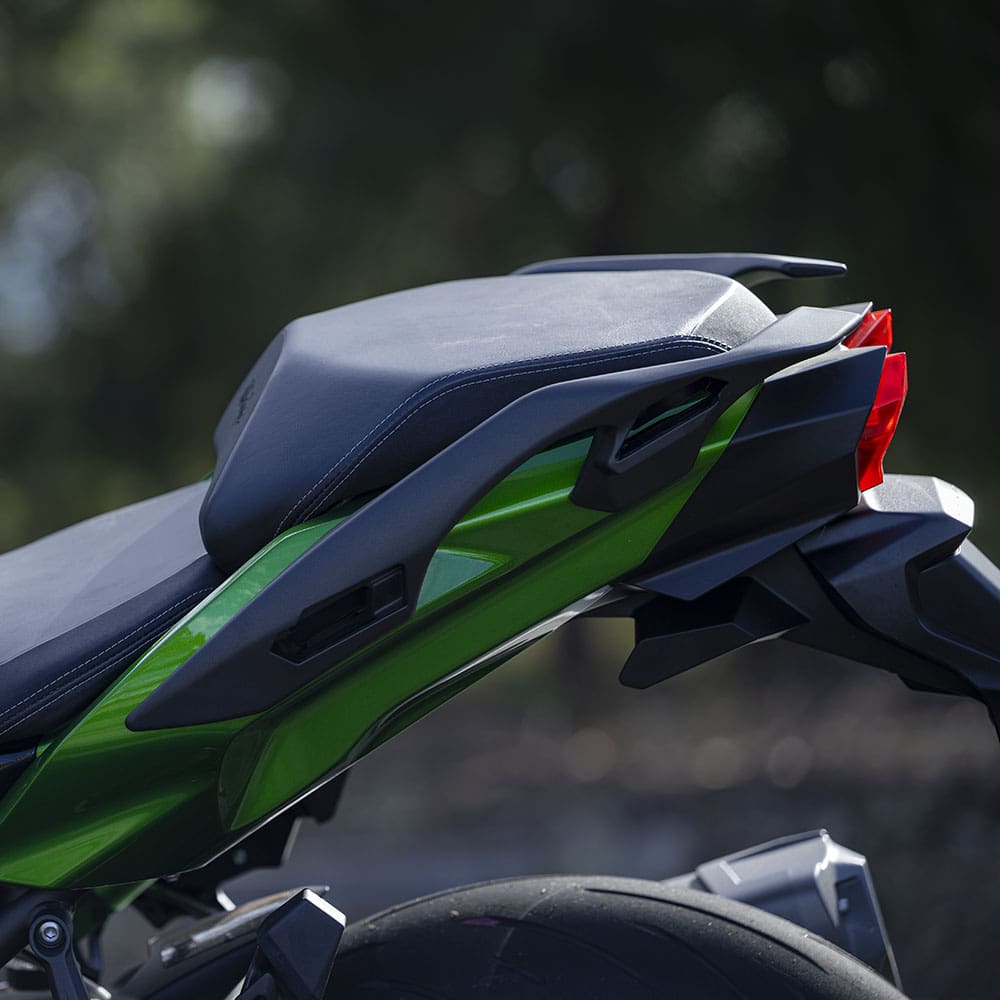European manufacturers have gapped the Japanese with radar-assisted rider aids, but after Kawasaki announced its intention to fit Bosch radar systems to future bikes in 2018, it’s finally arrived on the latest Ninja H2 SX. It means the new model is the most technologically advanced bike in Kawasaki’s fleet and the most electronically advanced Japanese motorcycle on the market.

Kawasaki’s PR blurb surrounding the new H2 SX is big on the addition of the new Bosch Advanced Rider Assistance Systems (ARAS) and the three new features it brings to the SX: adaptive cruise control, Kawasaki’s emergency stop system and blind-spot detection thanks to a second rear-mounted radar unit.
In addition, the new SX gets a six-axis IMU replacing the five-axis unit from the previous model, a new 6.5-inch TFT display, ergonomic changes aimed at improving both rider and pillion comfort, plus inlet and exhaust revisions for better efficiency, less weight and to help the SX meet Euro 5 regulations.
Outwardly, the Ninja’s styling has received some revision to accommodate the new tech, with the front unit mounted below the new smaller headlight and the rear below the taillight. Both the emergency stop system, or Forward Collision Warning (FCW), and adaptive cruise control (ACC) functions use the front radar to monitor the distance to objects up ahead and act accordingly. The FCW system won’t take over any braking duties, rather just displays a series of red LED lights just above the dash if you are closing in on an object too quickly, advising you that you really should be thinking about getting on the skids.
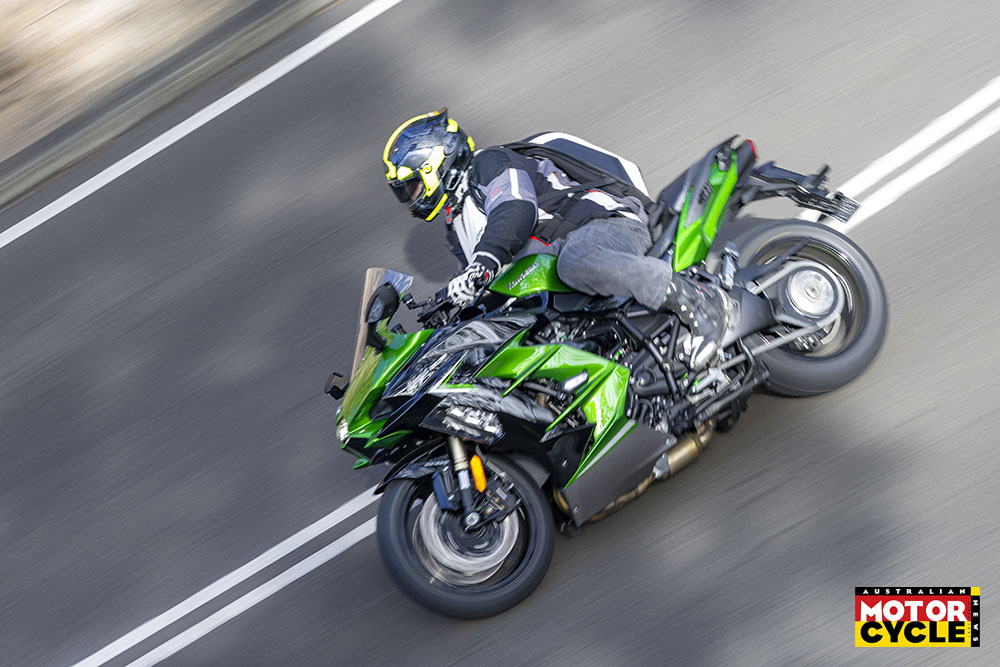
The ACC function monitors the traffic in the lane ahead and adjust you’re cruising speed to suit. You can set the adaptive cruise to Near, Medium, or Far depending on how close you’d like to be before the system kicks in. I preferred to have the system set to Near which puts you about two car lengths from the bumper of the vehicle in front of you, but I’m impatient and if I’ve caught you, I plan to go around you. The rear radar feeds information to the blind spot detection system, which monitors vehicles in your blind spot and, just like on a car, displays an orange light in your mirrors.

The ARAS work flawlessly and are easy to adjust via the bright new 6.5-inch TFT dash.
The flash dash offers connectivity to your smart device and allows you to install a range of apps on the TFT using Kawasaki’s new SPIN app, too. But the electronics extravaganza doesn’t stop there because the latest SX gains IMU-controlled cornering ABS and traction control, Hill Hold Assist, launch control, LED lighting including cornering lights, keyless start, immobiliser, tyre pressure monitoring, heated grips, a two-way quickshifter as well as four riding modes in Sport, Road, Rain, and Rider, the last one allowing you to adjust the electronic intervention as you see fit.
The revisions to the 2022 model have increased weight by six kilograms, taking the new model to a claimed kerb weight of 266kg, and have also jacked the price up by $2860 to $31,600 (plus on-road costs).
Radar and electronic doohickeys are snazzy and exciting, but their appeal tends to fade somewhat when you’re riding a 200-horsepower supercharged motorcycle. and I’d bet money that what most of you really want to know is ‘how’s it go, mate?’
Well, like a shower of shit, frankly! The 998cc supercharged in-line four bangs out 154.1kW of power at 11,000rpm with Ram-Air assistance, and 137.3Nm of torque at 8500rpm. It’s down on the 178.5kW of its sportier H2 sibling and, while the engine looks outwardly similar, it’s a completely different powerplant that now offers far better fuel economy, better low- to mid-range squirt and a friendlier approach to scaring the proverbial out of you.
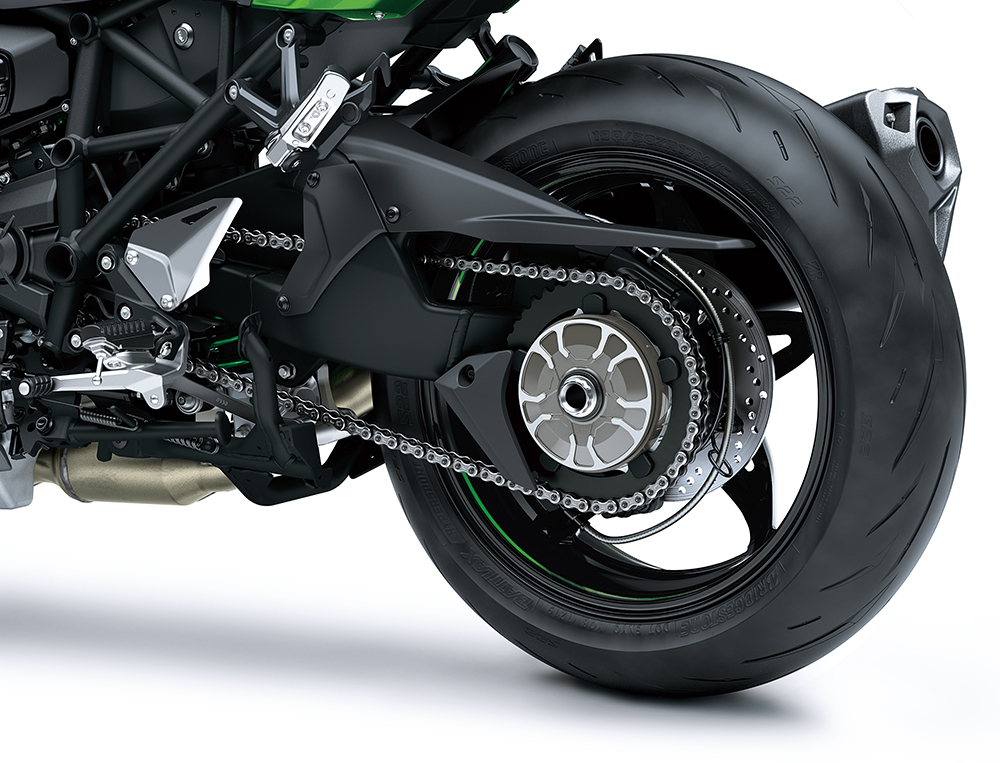
Power builds early and continues to the point where your helmet is flattening your forehead wrinkles, and you find it difficult to focus as the world blurs around you. It might have a bit less horsepower than Kawasaki’s ZX-14R, but it sure doesn’t feel like it in a seat-of-the-pants test. There’s far more grunt than you could ever use on the road – legally at least – but it’s nice to have. Overtaking is a simple affair no matter how long the convoy and the chirp from the supercharger had me holding gears longer than necessary just so I could hear that sweet, sweet noise when I backed off. In fact, I dispensed with using the buttery-smooth quickshifter on upshifts just so could enjoy the chirp of the supercharger between gear changes. Kawasaki’s supercharged four-banger is a thing of mechanical and aural beauty – the SX could handle like a split garden hose and I’d still want one.
Unsurprisingly, the SX doesn’t handle like a garden hose – split or not – and for a 266kg machine, it has pretty impressive manners.
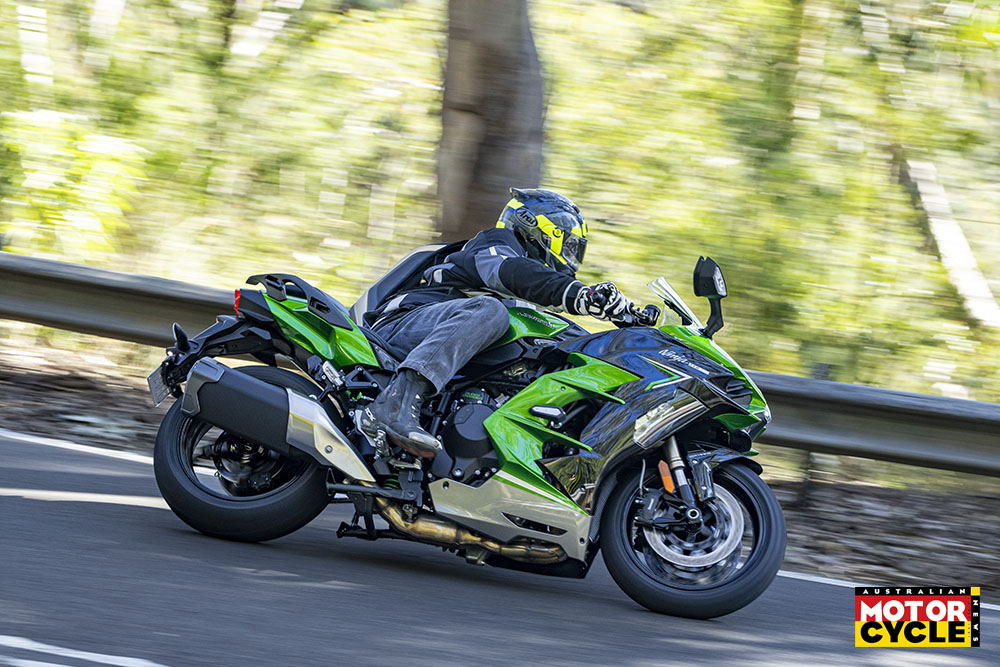
According to Kawasaki, it worked hard to keep weight low, and it appears to have nailed it this time. A push of the ’bars and a bit of body input gets it tipped in and lacks the off-putting fall-over feeling that its lighter Ninja 1000SX sibling has. Once it’s on the side of its Bridgestone S22 rubber, it’s rock solid and feels quite at home at angles that have your knee skimming just above ouch-ville.
Fast changes of direction are where the SX makes its weight and lengthy 1480mm wheelbase known and it takes a bit of muscle to pull it up and over – it’s no tight-and-twisty weapon. The side effect is that on fast flowing corners there’s not much that would get away from the SX.
In other markets the Ninja H2 SX SE is available for 2022 which is fitted with electronically adjustable suspension, but Australian customers need to make do with a fully adjustable 43mm Showa fork and rear shock with remote preload adjuster tucked behind the right-hand pillion peg bracket.
Twin ABS-equipped radial mount one-piece Tokicos grip dual 320mm discs up front and offer plenty of power and lovely feel. This is aided by the addition of a Brembo radial-pump master cylinder and braided lines. The overseas SE model is equipped with Brembo Monobloc calipers and it would have been nice to see them on the front, although I couldn’t fault the Tokicos. Electronic intrusion from the ABS is progressive and I have no complaints from the brakes at either end – pretty good for a two-wheeled package weighing well over 350kg with me on it.
Both ends feature a boost circuit that allows the Bosch 10.3ME ABS unit to add braking force to either or both ends with input from the ARAS or hill hold assist features, which is kinda cool. I may seem flippant and perhaps old fashioned about some of the gizmos on the SX, but you’ll not hear me bagging out features like the cornering traction control and ABS. These rider aids are essential on a bike this capable. No traction control with 200 ponies at the back wheel and you’re on your head, and try getting on the gas or the brakes in the rain without help.
The updated SX features new, wider and better padded seats and despite the revised foam, the rider’s seat height drops 15mm from 835mm to 820mm. I didn’t have the pleasure carting a pillion around, but the rear seat looks well-padded and shaped but it’s substantially higher that the rider’s seat and the seat-to-peg distance looks pretty brutal for a sports-tourer. There is a substantial grab rail, however, which also hides the points for fitting the optional integrated panniers, and under that high perch you’ll find a USB power outlet which would be far more useful up front.
The riding position is perfect sports tourer – sporty though comfortable. It’s more relaxed than the ZX-14R, less upright than the Ninja 1000SX and, for my 186cm frame, it is nigh-on perfect. The screen isn’t adjustable but provides excellent protection from the elements and the fairing does a good job of keeping your legs dry if there are showers about.
It’s really easy to move about on and the tank is easy to hook a knee around if you’re keen to scuff a slider. And that’s not out of the question at all, I’d happily take a stab at a trackday on the SX.
I have very few complaints about the SX, in fact I’m a bit smitten with the green machine, but there are a couple. Firstly, the SX has a keyless ignition meaning you get a fancy proximity fob that lets you get rolling without taking the key out of your pocket. Oddly though, you’ll still need to scrounge around for the key if you want to open the fuel cap.
My second gripe is a personal one. The abundance of potentially lifesaving features are awesome, sure, but I’d be happy to forgo some of that technology to knock a few dollars off that $32,160 price tag, or even swap some for a set of panniers which were included on the 2021 model but are now an optional extra on the 2022 model.
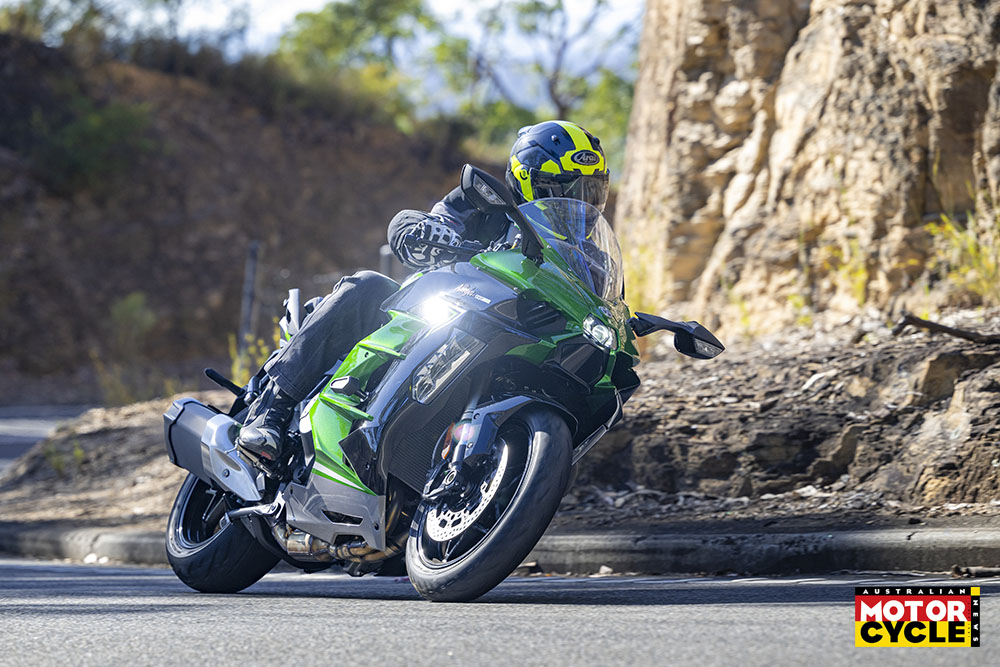
The Ninja H2 SX is a superb motorcycle, but at that price it ought to be. Money isn’t an object for me because I don’t have any, but if I did the biggest stumbling block to ownership would revolve around the value I’m getting for all of those dollars spent. There’s no doubt it’s impressively appointed, beautifully finished – the attention to detail paid to things like the green anodised preload adjusted and supercharger are so cool – and of course there’s that supercharged engine. You do get a lot for your money, and there’s little more you could ask for in a touring motorcycle (except panniers), I guess it just depends on where your priorities are. And my priorities say I’d like the option.
That said, it’s the same sort of dollars as Ducati’s radar-clad Multistrada V4 S and the Ninja is a more unique and arguably more special motorcycle than anything else in the sports-tourer segment. If you’re the rider who prioritises impact in your sports-tourer, then there’s no doubt – the SX is king.
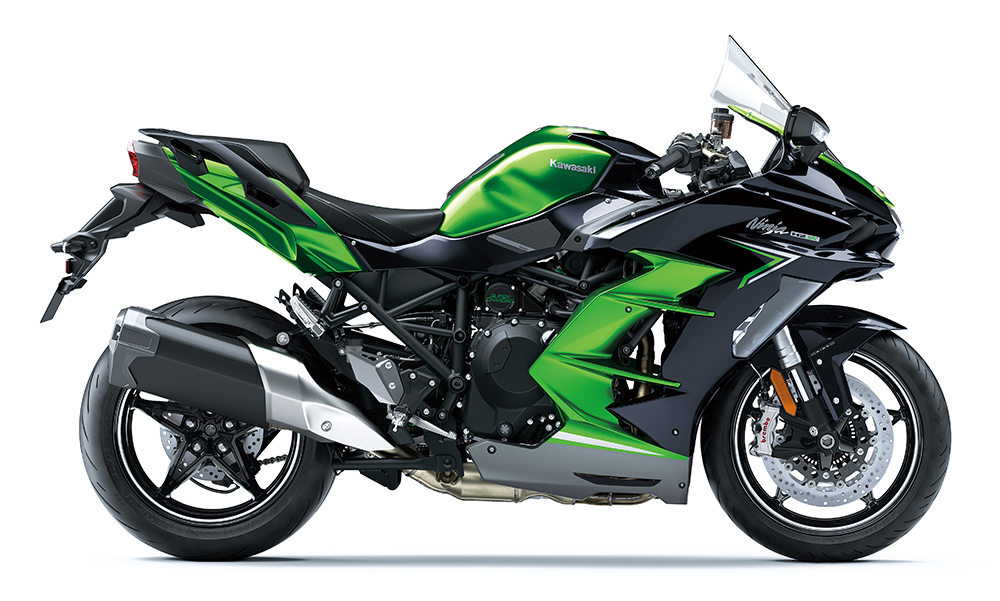
Kawasaki Ninja H2 SX
$32,160 (plus on road costs)
Power: 154.1kW
Torque: 137.3Nm
Weight: 266kg
Seat height: 820mm
Fuel capacity: 19L
Radar: Yes
![]()
The opposition
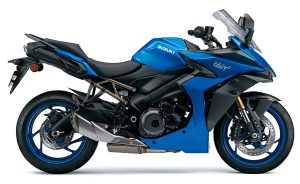
Suzuki GSX-S1000 GT
$19,090 (ride away)
Power: 112kW
Torque: 106Nm
Weight: 226kg
Seat height: 810mm
Fuel capacity: 19L
Radar: No
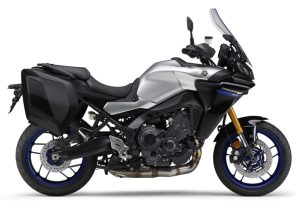
Yamaha Tracer 9 GT
$23,999 (ride away)
Power: 87.5kW
Torque: 93Nm
Weight: 220kg
Seat height: 810mm
Fuel capacity: 18L
Radar: Not yet
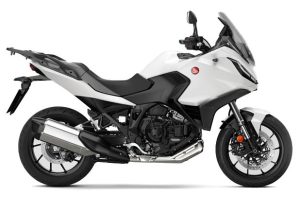
Honda NT1100
$21,690(plus on road costs)
Power: 75kW
Torque: 104Nm
Weight: 238 kg
Seat height: 820mm
Fuel capacity: 20.4L
Radar: No
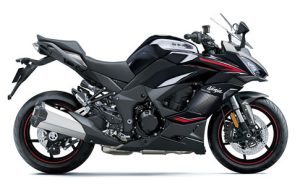
Kawasaki Ninja 1000SX
$17,459 (plus on road costs)
Power: 104.5kW
Torque: 111Nm
Weight: 235kg
Seat height: 835mm
Fuel capacity: 19L
Radar: No

Ducati Multistrada V4 S
From $35,000 (ride away)
Power: 125kW
Torque: 125Nm
Weight: 243kg
Seat height: 840mm
Fuel capacity: 22L
Radar: Optional
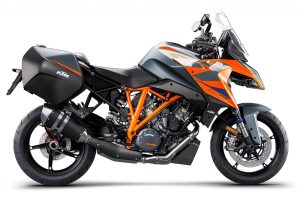
KTM 1290 Super Duke GT
$31,695 (plus on road costs)
Power: 128.7kW
Torque: 141Nm
Weight: 209 kg (dry)
Seat height: 835mm
Fuel capacity: 23L
Radar: No
TEST: PETE VORST PHOTOGRAPHY INCITE IMAGES
